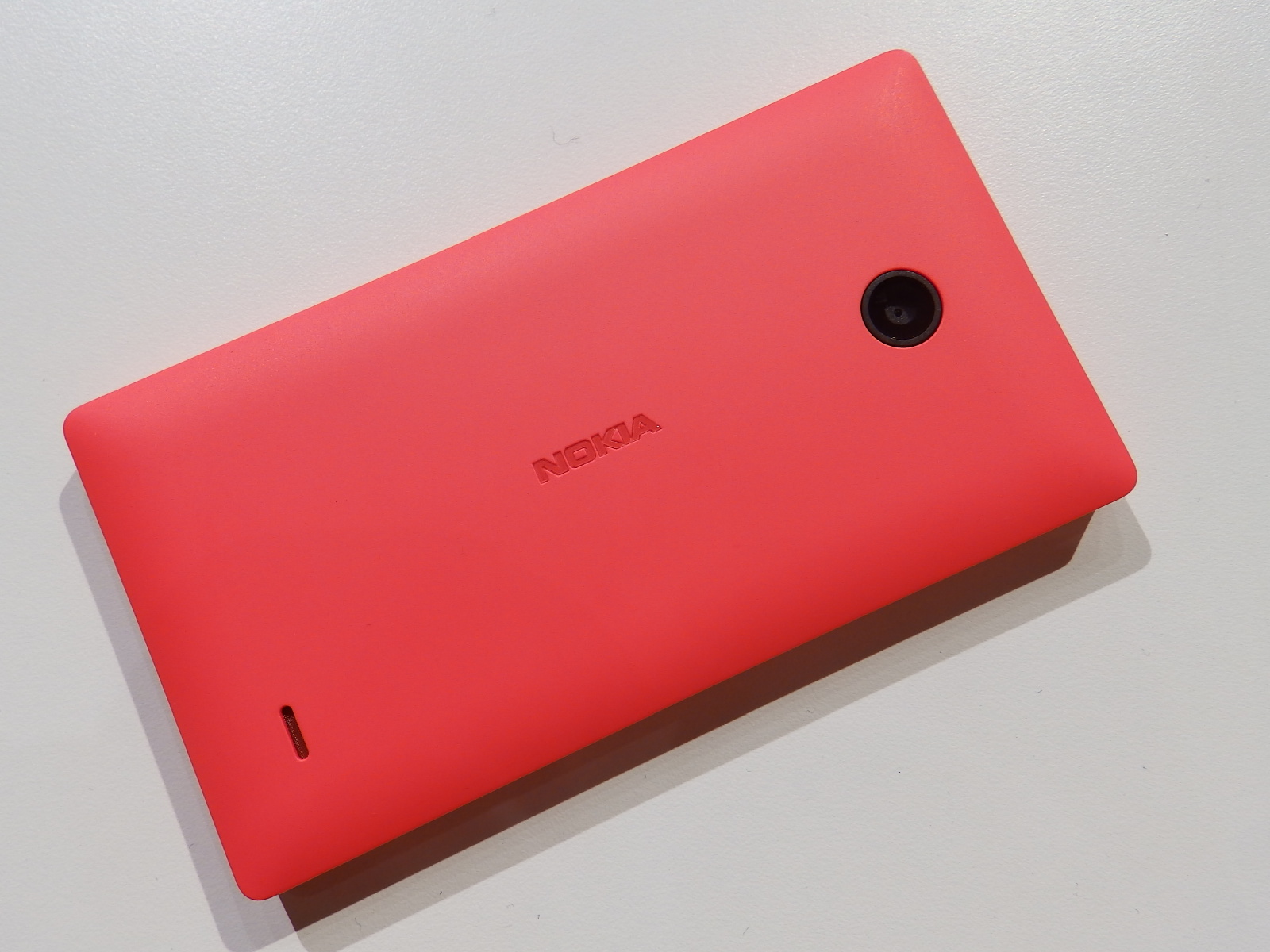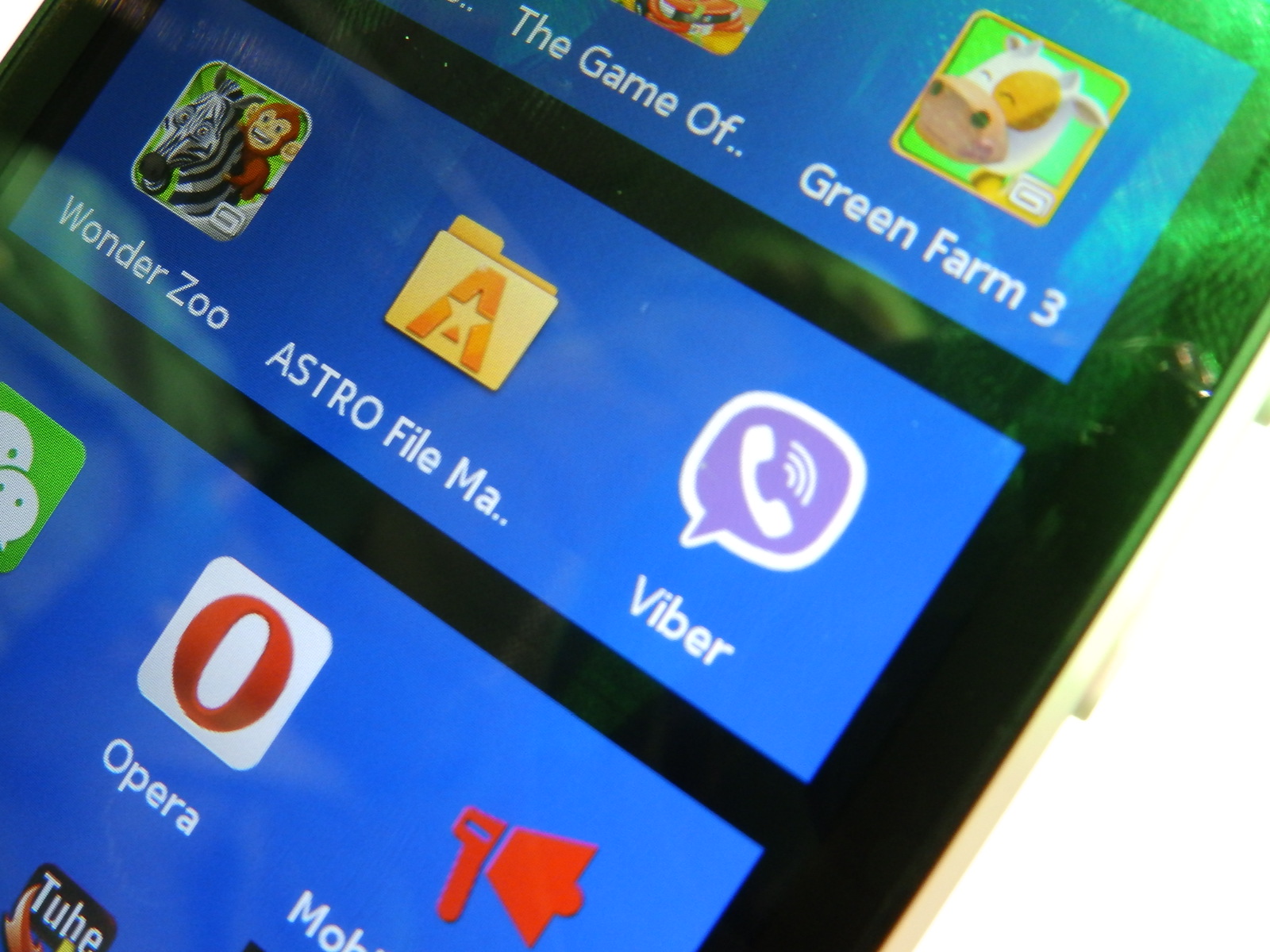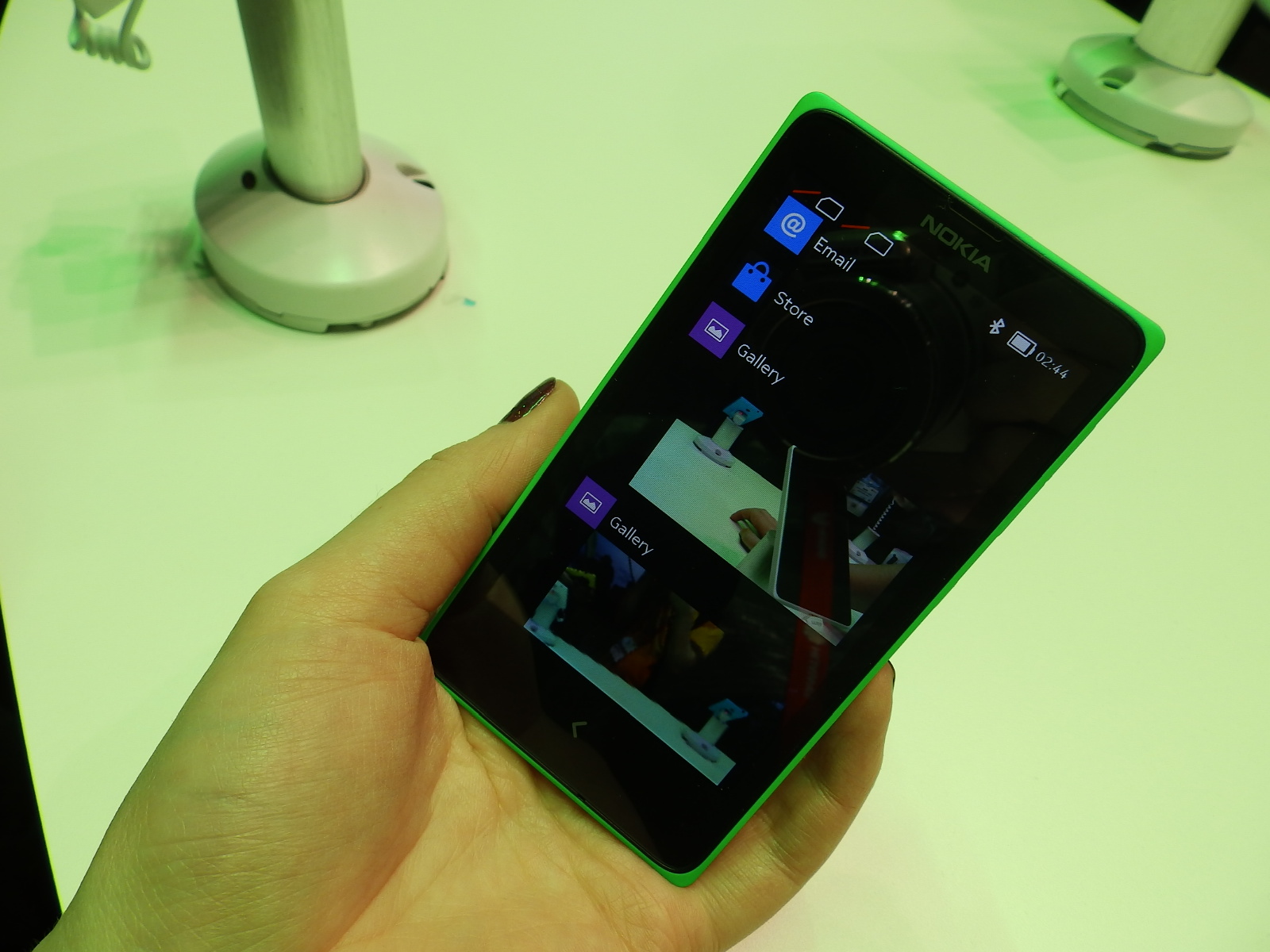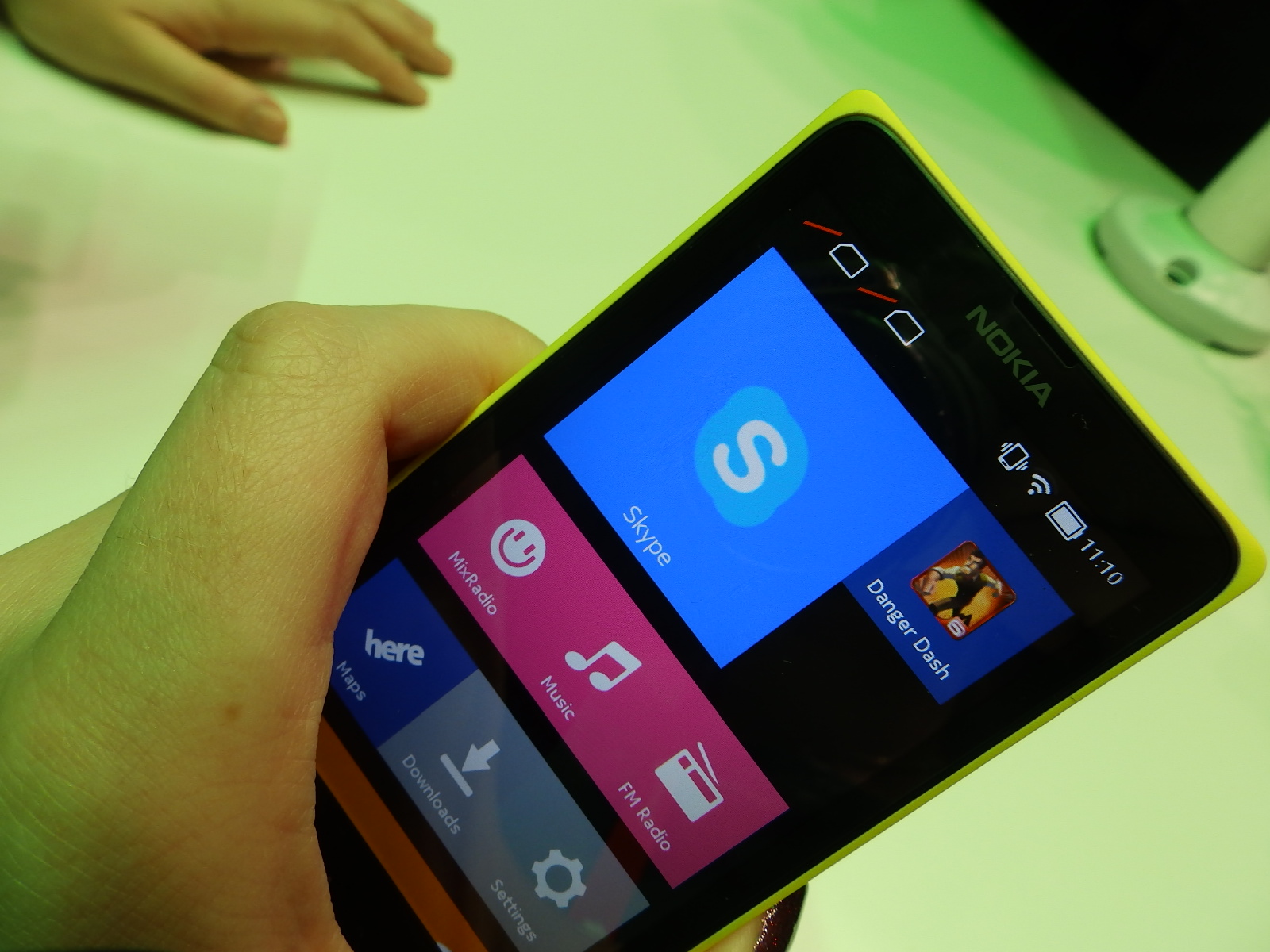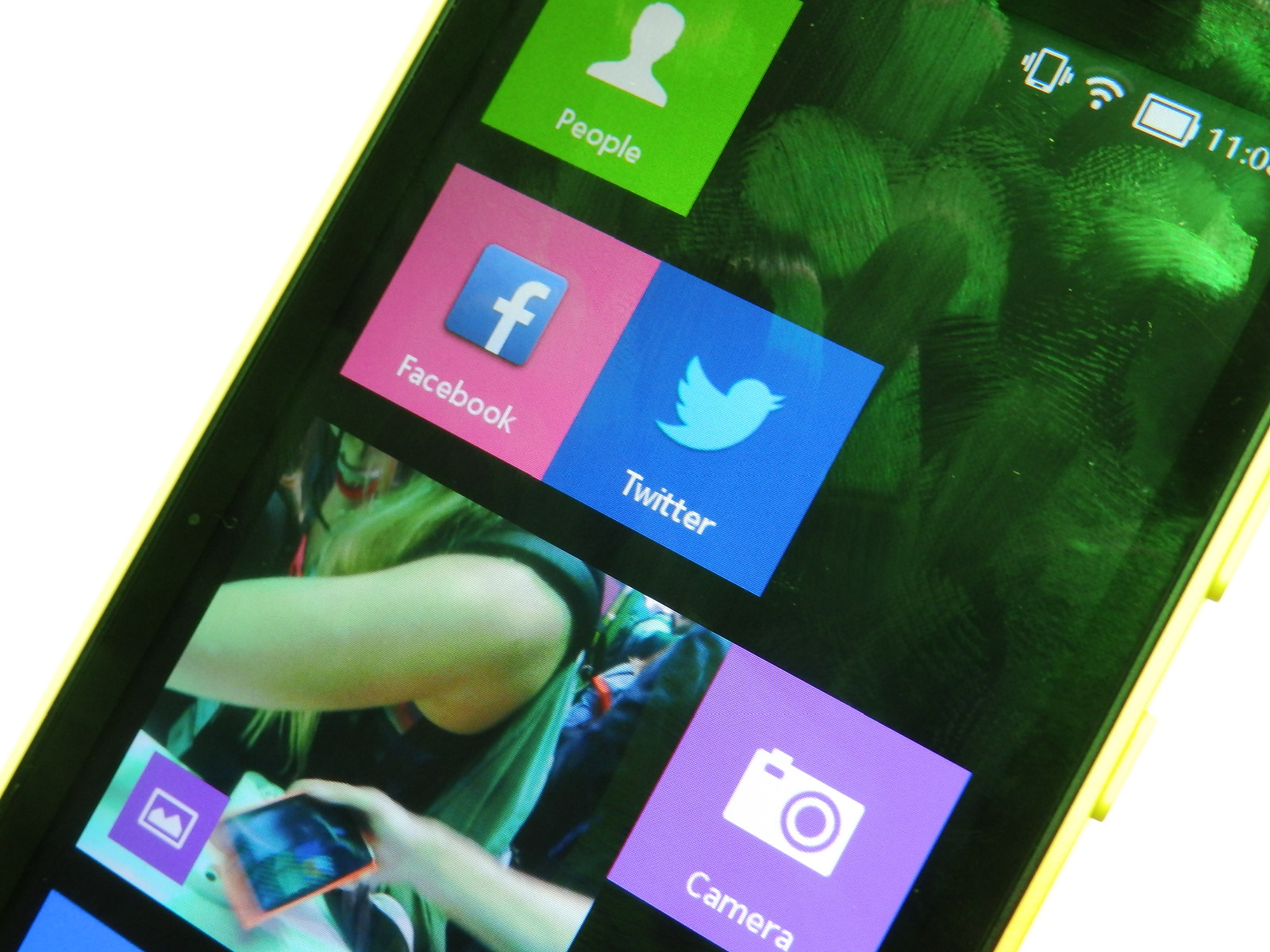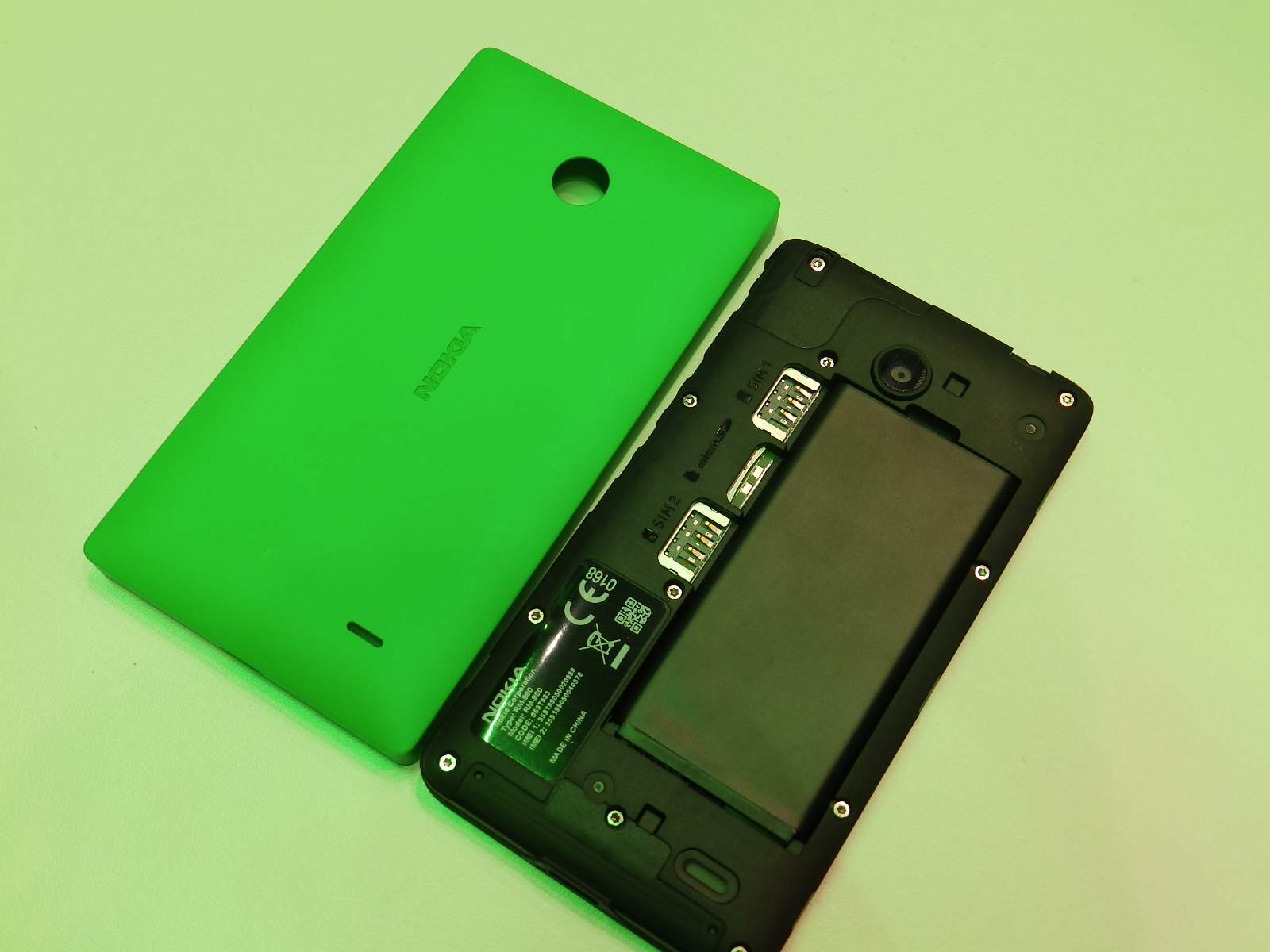Hands On with Nokia's Windows Phone-flavored Android OS
Nokia's stepping away from Windows Phone and has taken a small step towards Android. We go hands on with the company's trio of Android smartphones.
Despite the big flashy booth, Nokia didn't announce a single high-end device today. Instead, the company is focusing on bright, colorful, and budget-friendly. That's not all that surprising in and of itself. What is surprising is that the company's announcements included three Android-based smartphones. This is Nokia's first foray into the world of Android. So how did they do?
We went hands on with the phones at Nokia's booth to see how the company fared when trying to meld Android with the Windows Phone aesthetic and Asha functionality. The Nokia X and X+ are essentially the same device. The latter just has a bump in RAM and storage (Nokia says it's targeting multimedia devices). The Nokia XL is a bigger phone, but the software is the same.
This software is called Nokia X and is based on Android. As we mentioned this morning, users won't have access to the Google Play Store. Instead, they'll have Nokia's own solution as well as third party app stores from carriers or companies that have been ballsy enough to take on Google (like Amazon). The devices borrow from Windows Phone with a tile-like interface that offers quick and easy access to Microsoft services (like Skype) right on the home screen. Borrowing from Nokia's budget line of Asha smartphones, the OS has FastLane to the left of the homescreen that shows your most recently opened applications. This is supposed to save time if you're taking a lot of photos, for example, or texting back and forth with a friend, and neither application is too quick to access on your phone.
Perhaps the most interesting thing we learned while playing with Nokia's new X devices was the company's reasoning for making its own version of Android. Nokia could have easily skinned stock Android with its own UI. Plenty of its competitors do it, and it likely would have been a lot easier. Indeed, the Nokia rep we spoke to said a lot of work went into creating the Nokia X OS because "people don't like stock Android." That's not something we'd necessarily agree with, and it doesn't really explain why the company couldn't just skin a full version of Android. In the end, the thing Nokia's rep talked about most was needing to get Microsoft's services in there. Given Nokia was just recently bought by Microsoft, this was obviously extremely important and one of the main reasons the company decided to go with its own custom version of the Android software stack.
The Nokia rep also said that delivering an OS that would run smoothly on lower end devices was key because when researching what people wanted, the response was apparently Android on an Asha-type phone. Nokia X 1.0 is not slow or sluggish, but in the brief time we played with it, it wasn't blazing fast either. The tile-interface also didn't feel quite as sleek as it does in Windows Phone 8.
Get Tom's Hardware's best news and in-depth reviews, straight to your inbox.
One thing is encouraging, though, and that's the fact that Nokia said it made its own version of Android specifically for lower end devices. Does that mean there's still a chance we'll see a full version of Android on high-end Nokia hardware at some point in the future? Let's hope so, because this didn't quite meet our craving for Android on Nokia.
As far as hardware is concerned, the phones feel very much like Lumia devices. Those colorful backs are also removable, so you can change the snap covers depending on your mood. The XL seems like the perfect solution for those who want to jump on the large phone trend without spending big bucks.
Check out all our Mobile World Congress 2014 coverage here!
Follow Jane McEntegart @JaneMcEntegart. Follow us @tomshardware, on Facebook and on Google+.

Jane McEntegart is a writer, editor, and marketing communications professional with 17 years of experience in the technology industry. She has written about a wide range of technology topics, including smartphones, tablets, and game consoles. Her articles have been published in Tom's Guide, Tom's Hardware, MobileSyrup, and Edge Up.
-
Murissokah The main reason I can see for Nokia to release Android phones was to tap into the much larger ecosystem. They design great phones and could easily come up with good offerings. Without google play support, I fear these phones will be a lot less appealing.Reply -
rokit MS wants smartphone/tablet market and releases metro-crap mobile. Sure design wise for phones its ok but its not up there with Android. MS fails yet again. Noone puts ms mobile OS on their devices ->Reply
next plan. Advertise it as an Android by using it in the first place but try to popularize ms' own interface. MS is so simple to understand these days. -
mman74 It's obviously a trojan. See it's Android but you see it looks just like Windows.They must be desperate for new people to try the new Windows Mobile / RT interface.Reply -
nebun all i could see was fingerprints....thanks but no thanks...i will stick with my oleophobic iPhone 5S...best phone on earthReply -
CRITICALThinker Replyall i could see was fingerprints....thanks but no thanks...i will stick with my oleophobic iPhone 5S...best phone on earth
I believe the biggest reason for the fingerprints is that it is a display phone, my SII is a fingerprint magnet, the biggest problem with the Nokia is the proprietary OS and app store. -
Old_Fogie_Late_Bloomer "Does that mean there's still a chance we'll see a full version of Android on high-end Nokia hardware at some point in the future?"Reply
Nope.
"Let's hope so, because this didn't quite meet our craving for Android on Nokia."
These aren't Android phones. These phones are the replacement for Asha, and they are based on ASOP because it was cheaper and/or easier than building a featurephone-plus OS from scratch. In basically every way that matters, these are not Android phones. They are Nokia phones. -
Old_Fogie_Late_Bloomer "all i could see was fingerprints....thanks but no thanks...i will stick with my oleophobic iPhone 5S...best phone on earth"Reply
Hashtag-first-world much? These phones are targeting prices that are 10%-20% that of an iPhone, and the overall value that they provide will be much greater. -
Blazer1985 "all i could see was fingerprints....thanks but no thanks...i will stick with my oleophobic iPhone 5S...best phone on earth"All I could see is someone comparing a 80€ phone with a 800€ one. The iPhone is definetly the best phone for you.Reply -
Old_Fogie_Late_Bloomer In other news, holy HELL is the commenting system on this site broken.Reply
Edit: since the edit to my original post has finally shown up, I deleted that content from this post. Seriously, this is just embarrassing.
